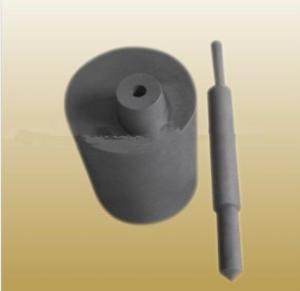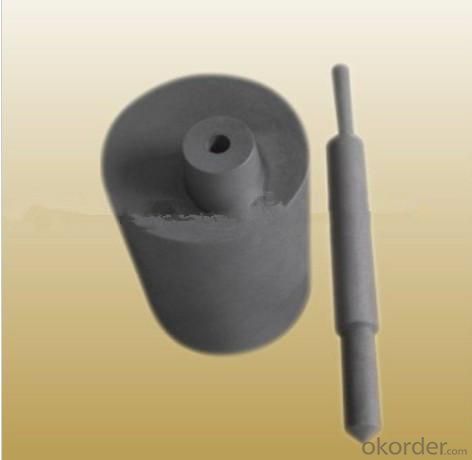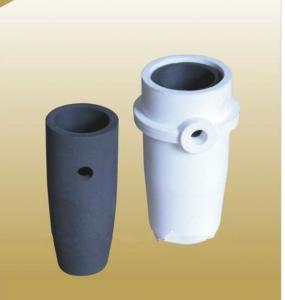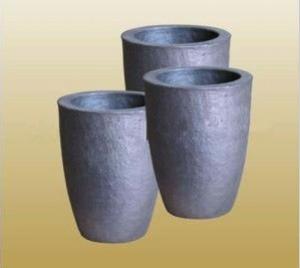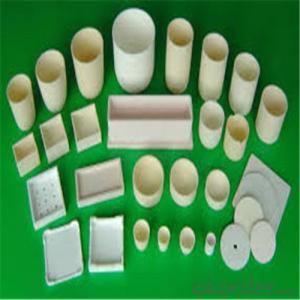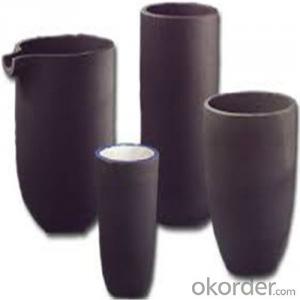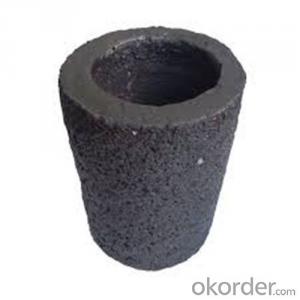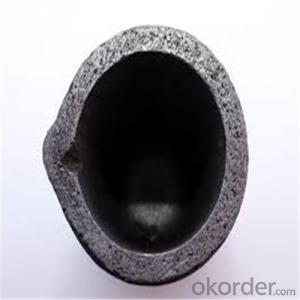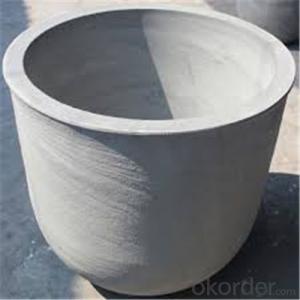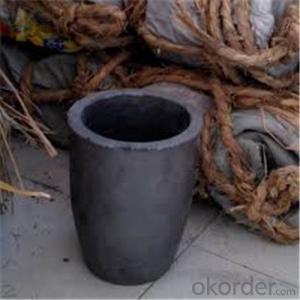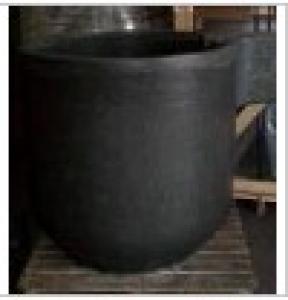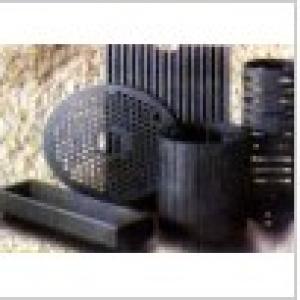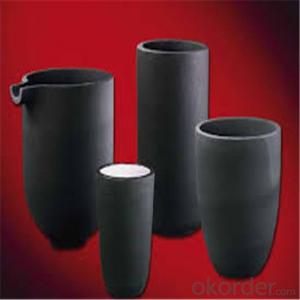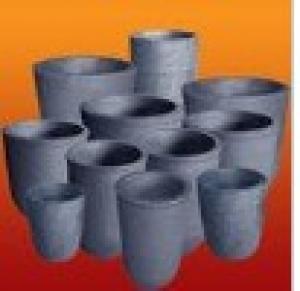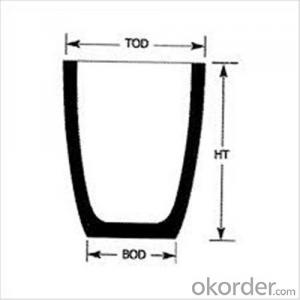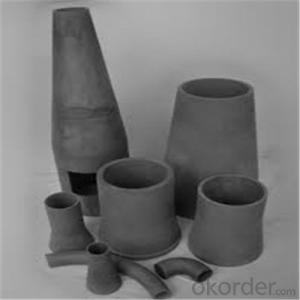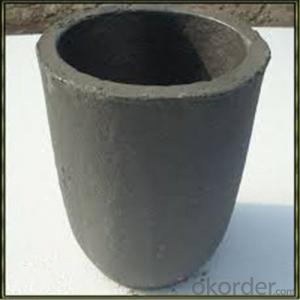Graphite Crucible Sizes for Galloni/VCM
- Loading Port:
- China Main Port
- Payment Terms:
- TT or LC
- Min Order Qty:
- 50 Sets set
- Supply Capability:
- 10000 Sets per Month set/month
OKorder Service Pledge
OKorder Financial Service
You Might Also Like
Detailed Product Description
Graphite casting crucible made of high pure graphite material, could be used with Galloni / VCM casting machine.
Graphite crucible for Galloni/VCM
Specification:
Graphite crucible: OD 78 * H 120 MM,
Graphite stopper: OD 19* L200 MM
Features:
High purity, fine grain, good performance of electrical conductivity and thermal conductivity, high density, good corrosion resistance, thermal shock resistance, thermal stability, high mechanical strength, low permeability, and good oxidation resistance. The raw material is capable of producing various semiconductor molds and radio tube.
Graphite Materials index:
Content: 99.99% graphite
Density: 1.87g/cm3
Compressive strength: 65mPa
Shore hardness: 55
Porosity: 15%
- Q: Is graphite crucible resistant to hydrofluoric acid?
- Mainly depends on the use of working conditions, the use of air, then more than 600 degrees Celsius will begin to be oxidized, and the service life will not be long.
- Q: What is the purpose of using a graphite crucible?
- The purpose of using a graphite crucible is to provide a heat-resistant container for melting and casting various materials at high temperatures, particularly metals and alloys. Graphite crucibles have excellent thermal conductivity and high melting points, allowing them to withstand extreme heat without cracking. Additionally, graphite is chemically inert, which prevents any unwanted reactions between the crucible and the melted material. Its durability and stability make it an ideal choice for applications in foundries, laboratories, and industrial processes where precise temperature control and consistency are crucial.
- Q: New energy, crystal, silicon and other research and development, production, because the crucible rotary table heating device, there is no good solution to share?
- The silicone rubber electric plate allows heat to pass wherever it is needed, improves heat transfer, speeds up heating and reduces power requirements in processing.
- Q: Can graphite crucibles be used for heat treatment processes?
- Yes, graphite crucibles can be used for heat treatment processes. Graphite has excellent thermal conductivity and high melting point, making it suitable for withstanding extremely high temperatures required for heat treatment. Additionally, graphite crucibles have good resistance to chemical corrosion, which is important when dealing with reactive or corrosive substances during heat treatment.
- Q: What are the components of a pencil core?
- Graphite (graphite) is a mineral name, usually produced in metamorphic rocks and is coal or carbonaceous rock (or sediment) formed by regional metamorphism or magmatic intrusion.
- Q: Are there any alternative materials to graphite for crucibles?
- Indeed, there exist materials other than graphite that can be used for crucibles. Some commonly used alternatives encompass silicon carbide, alumina, zirconia, and boron nitride. These materials are often favored due to their distinct properties and applications. For instance, silicon carbide displays remarkable thermal conductivity and great mechanical strength, rendering it suitable for high-temperature applications. Conversely, alumina is renowned for its chemical inertness and resistance to corrosion, making it an ideal choice for handling reactive materials. Zirconia offers commendable thermal shock resistance and is frequently employed in applications that necessitate rapid temperature changes. Lastly, boron nitride is favored for its exceptional thermal stability and lubricity. Each of these alternative materials possesses its own merits and specific uses, thus making them feasible options for crucibles depending on the specific requirements of the application at hand.
- Q: Can graphite crucibles be used for carbonization processes?
- Yes, graphite crucibles can be used for carbonization processes. Graphite is a highly stable and heat-resistant material that can withstand high temperatures required for carbonization. It is commonly used in industries such as metallurgy and jewelry making for its excellent thermal conductivity and resistance to chemical reactions, making it suitable for carbonization processes.
- Q: Can graphite crucibles be used with gas-fired furnaces?
- Yes, graphite crucibles can be used with gas-fired furnaces. Graphite is a suitable material for high-temperature applications and is commonly used in furnaces, including gas-fired ones, due to its excellent heat resistance and thermal conductivity properties.
- Q: Can I add a graphite furnace to the East and West aa-7002?
- Atomizer with different flame atomizer consists of three parts: atomizer, premixing chamber and burner. Features: easy operation and good reproducibility.
- Q: Can graphite crucibles be used for material synthesis?
- Yes, graphite crucibles can be used for material synthesis. Graphite is an excellent choice for crucibles in material synthesis applications due to its unique properties. It has a high melting point, exceptional thermal conductivity, and chemical inertness, which make it suitable for various high-temperature reactions and processes. Graphite crucibles are commonly used in the synthesis of materials such as metals, alloys, ceramics, and compounds. They are particularly favored in processes involving high temperatures, such as melting, heating, and vaporization. The high thermal conductivity of graphite allows for efficient heat transfer, ensuring uniform heating and temperature distribution throughout the crucible. Another advantage of graphite crucibles is their chemical inertness. They do not react with most materials, making them ideal for synthesizing compounds or alloys without contamination. Additionally, graphite has low reactivity with oxygen, which is crucial in preventing unwanted oxidation during material synthesis. Graphite crucibles are also known for their durability and resistance to thermal shock. They can withstand rapid temperature changes without cracking or breaking, ensuring the integrity of the material synthesis process. This durability allows for repeated use of the crucibles, making them a cost-effective option in the long run. Overall, graphite crucibles are widely used in material synthesis due to their high melting point, excellent thermal conductivity, chemical inertness, and durability. Their unique properties make them suitable for a wide range of applications and ensure the successful synthesis of various materials.
1. Manufacturer Overview
| Location | Guangdong,China (Mainland) |
| Year Established | 2010 |
| Annual Output Value | |
| Main Markets | North America South America Eastern Europe Southeast Asia Africa Oceania Mid East Eastern Asia Western Europe |
| Company Certifications |
2. Manufacturer Certificates
| a) Certification Name | |
| Range | |
| Reference | |
| Validity Period |
3. Manufacturer Capability
| a) Trade Capacity | |
| Nearest Port | |
| Export Percentage | 61% - 70% |
| No.of Employees in Trade Department | |
| Language Spoken: | |
| b) Factory Information | |
| Factory Size: | 1,000-3,000 square meters |
| No. of Production Lines | Above 10 |
| Contract Manufacturing | OEM Service Offered |
| Product Price Range | |
Send your message to us
Graphite Crucible Sizes for Galloni/VCM
- Loading Port:
- China Main Port
- Payment Terms:
- TT or LC
- Min Order Qty:
- 50 Sets set
- Supply Capability:
- 10000 Sets per Month set/month
OKorder Service Pledge
OKorder Financial Service
Similar products
Hot products
Hot Searches
Related keywords
